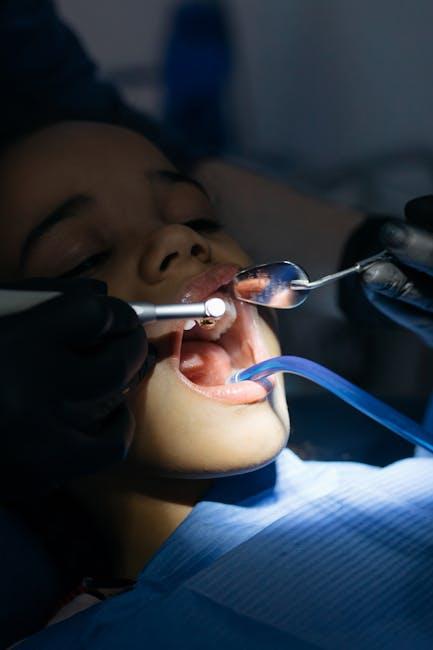
1 in 3 Kids Has Dental Problems, Poll Finds – U.S. News & World Report
Updated June 2024
Introduction
Recent findings from a nationwide poll reveal a concerning statistic: 1 in 3 children in the United States suffers from dental problems. This alarming number shines a spotlight on the state of pediatric oral health and raises important questions about access to dental care, awareness of preventive measures, and lifestyle factors influencing kids’ teeth. In this article, we will explore the causes behind this issue, its implications, and practical ways parents and caregivers can help improve dental health for children nationwide.
Understanding the Scope: What the Poll Reveals
The poll conducted by U.S. News & World Report surveyed thousands of families with children under the age of 18. Key takeaways include:
- 33% of kids experience dental problems such as tooth decay, cavities, gum inflammation, or other oral health issues.
- Significant disparities exist in dental health across different socioeconomic groups.
- Lack of routine dental visits is a major contributor to untreated oral conditions.
- Diet and oral hygiene habits impact the prevalence of dental problems significantly.
Common Dental Problems Affecting Kids
Dental issues in children can vary in type and severity. Here are some of the most frequently encountered problems:
| Dental Problem | Common Causes | Typical Symptoms |
|---|---|---|
| Tooth Decay (Cavities) | Sugar-heavy diet, poor brushing habits | Pain, visible holes, tooth sensitivity |
| Gingivitis | Plaque buildup, infrequent flossing | Red, swollen gums, bleeding while brushing |
| Enamel Hypoplasia | Nutritional deficiencies, illness | White/yellow spots, weaker enamel |
| Dental Trauma | Sports injuries, accidents | Chipped or broken teeth, bleeding |
Why Are Dental Problems So Prevalent Among Kids?
Several interrelated factors contribute to the high rate of dental problems in children:
- Inadequate Oral Hygiene: Many children do not brush or floss effectively or often enough to remove harmful plaque.
- Poor Dietary Choices: High consumption of sugary snacks, sodas, and processed foods accelerates tooth decay.
- Limited Access to Dental Care: Low-income families may struggle to afford dental visits or lack nearby providers.
- Lack of Awareness: Some parents and caregivers may underestimate the importance of early dental visits and routine care.
- Fluoride Deficiency: Insufficient fluoride exposure reduces teeth’s natural resistance to cavities.
Benefits of Addressing Pediatric Dental Health Early
Prioritizing oral health in children comes with far-reaching benefits:
- Prevents Pain and Infection: Early treatment reduces risk of toothaches and oral infections.
- Improves Overall Health: Good oral health supports better nutrition and lowers risks of diseases linked to poor dental care.
- Enhances Speech and Learning: Healthy teeth aid in clear speech and improve confidence at school.
- Builds Lifelong Habits: Teaching children good dental care early leads to healthier adult smiles.
Practical Tips to Improve Your Child’s Dental Health
Parents and caregivers can take active steps to combat dental problems in children. Here are actionable tips:
- Establish a Daily Brushing Routine: Make sure your child brushes twice a day with fluoride toothpaste for two minutes each time.
- Introduce Flossing Early: Help your child floss daily as soon as two teeth start touching.
- Limit Sugary Foods and Drinks: Opt for fruits, vegetables, and water over candy, sodas, and juice boxes.
- Schedule Regular Dental Check-Ups: Aim for visits at least twice a year for cleanings and early intervention if needed.
- Use Fluoride Treatments: Talk to your dentist about fluoride varnishes or supplements if water supply is low in fluoride.
- Encourage Protective Gear for Sports: Use mouthguards during physical activities to prevent dental injuries.
- Model Good Behavior: Show children how you care for your own teeth to reinforce habits.
Case Study: Turning Around Dental Health in a Community
In a small Midwestern town, the local health department launched an initiative to reduce childhood dental problems after poll results showed 40% prevalence.
- Actions Taken: School dental screenings implemented, mobile dental clinics deployed, and community education programs launched.
- Results: After 12 months, there was a 25% increase in routine dental visits and a 15% reduction in new cavities among children.
- Lesson Learned: Community-level efforts combining education, access, and preventive care work well to protect kids’ smiles.
Firsthand Experience: A Parent’s Perspective
“When my daughter developed cavities at age 7, it was scary but also eye-opening. The dentist helped us set up a brushing schedule, and we cut back on sweets. Now, two years later, her smile looks great and her confidence has skyrocketed!” – Emily R., parent
Summary Table: Key Statistics from the Poll
| Statistic | Data |
|---|---|
| Children with Dental Problems | 33% |
| Children without Dental Visits Last Year | 27% |
| Parents Citing Sugar as Top Cause | 58% |
| Increase in Preventive Care Adoption (Past 5 Years) | 12% |
Conclusion
The revelation that one in three kids in the U.S. deals with dental problems highlights an urgent public health issue requiring attention from families, healthcare providers, and policymakers alike. Fortunately, many dental issues are preventable with good habits, access to care, and community support. By staying informed and proactive, parents can shield their children from pain, discomfort, and long-term oral health issues. Prioritizing your child’s dental health today lays the foundation for a lifetime of confident, healthy smiles.
Start today by scheduling a dental check-up and making small positive changes to your child’s oral care routine — the payoff will be priceless!


